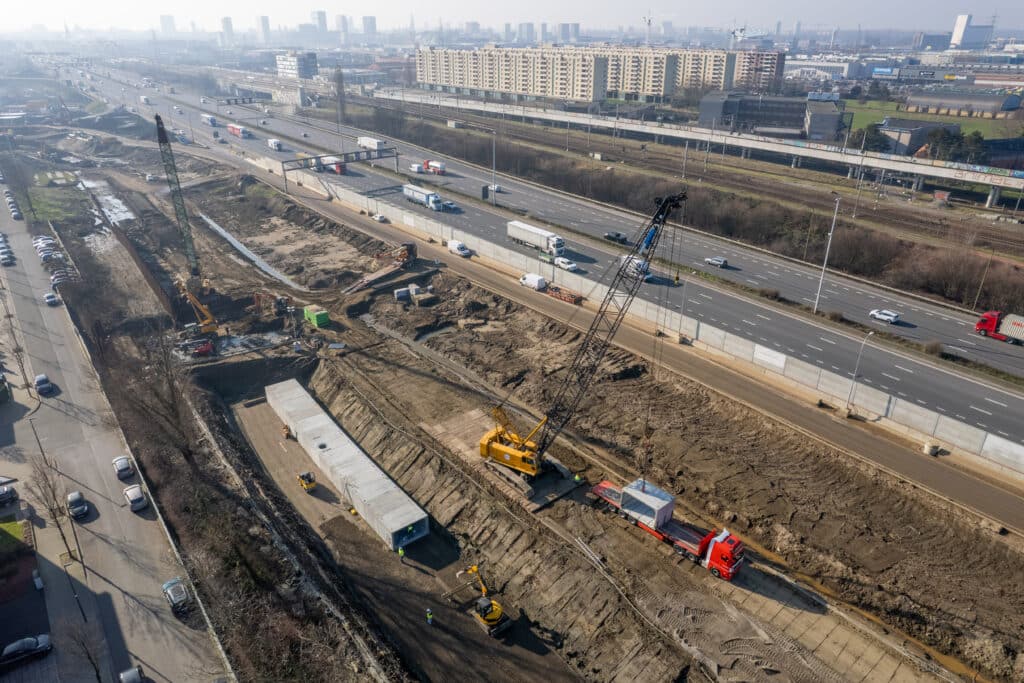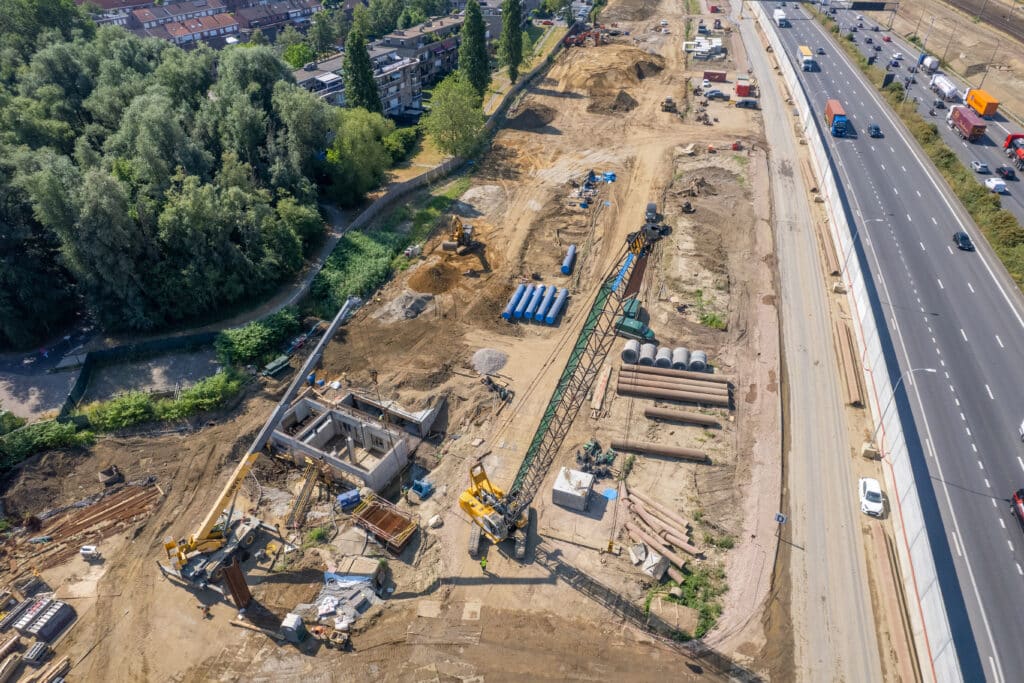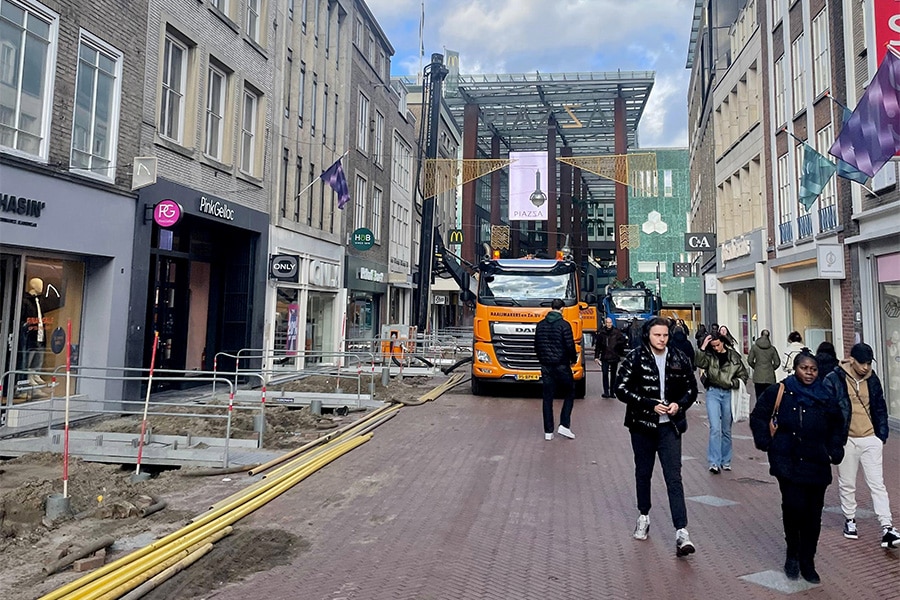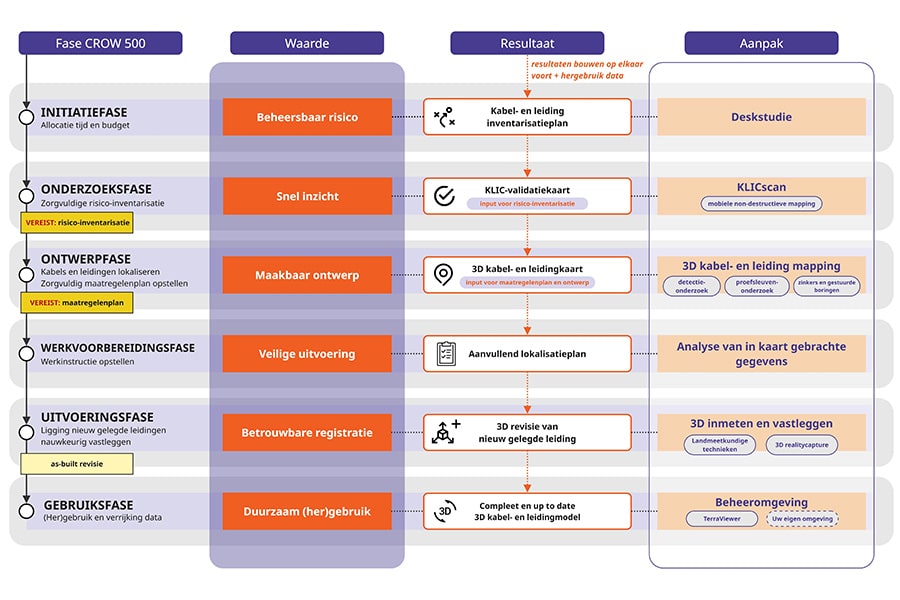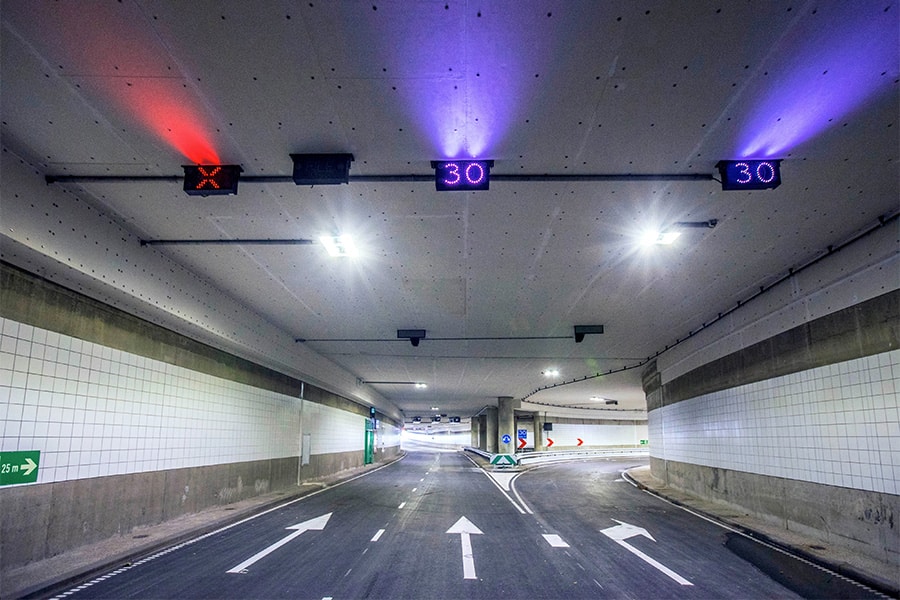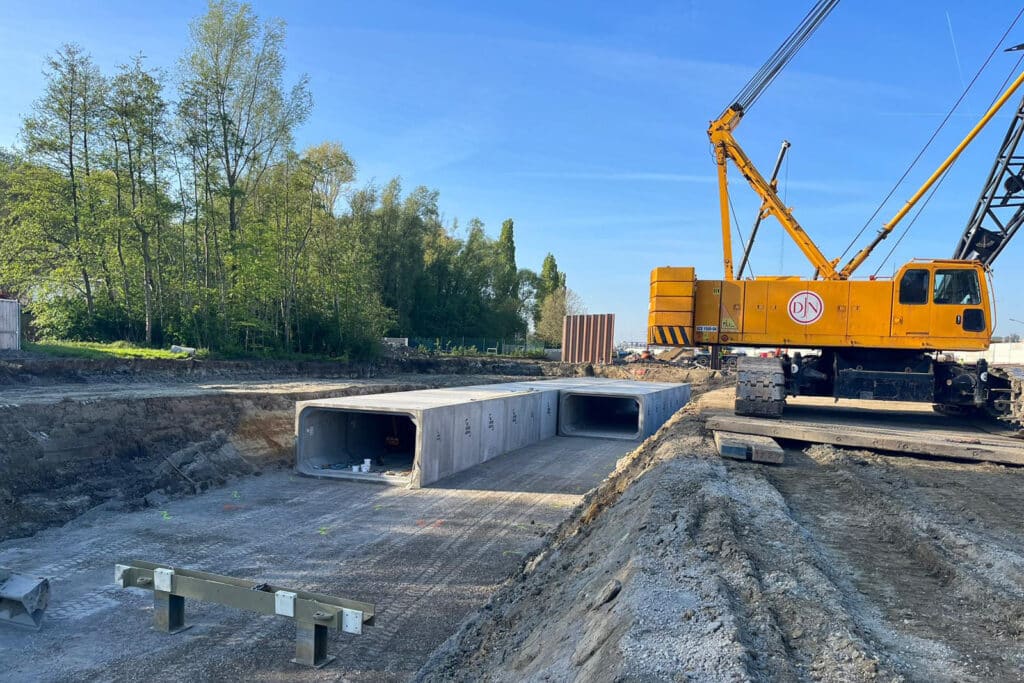
Works Schijnkoker Merksem completely completed
In Merksem, the past few years have been hard at work preparing for the Oosterweel works. This week we completed our biggest preparatory work here: moving the Schijnkoker. This concrete shaft was an obstacle to the construction of the Bypass and the sunken ring road. In order to protect the Rietschoorvelden district of Merksem from flooding in the future as well, we first built a new shaft before removing the old one. We commissioned the new shaft last summer. Since this week, the demolition work on the old shaft is also behind us. Now the area between the Rietschoorvelden district and the Antwerp Ring is completely ready for the construction of the Bypass.
With the Oosterweel works, we are not only putting the highway deeper into the ground, we are also building large canopies over the new highway. Before that, the old Schijnkoker was in the way. To prevent the neighborhood from being exposed to flooding again, in recent years we first built a new Schijnkoker, closer to the neighborhood. We also relocated water and gas pipes and sewers. In the summer of 2024 we commissioned the last part of the new Schijnkoker. Then we started the demolition work of the old shaft.
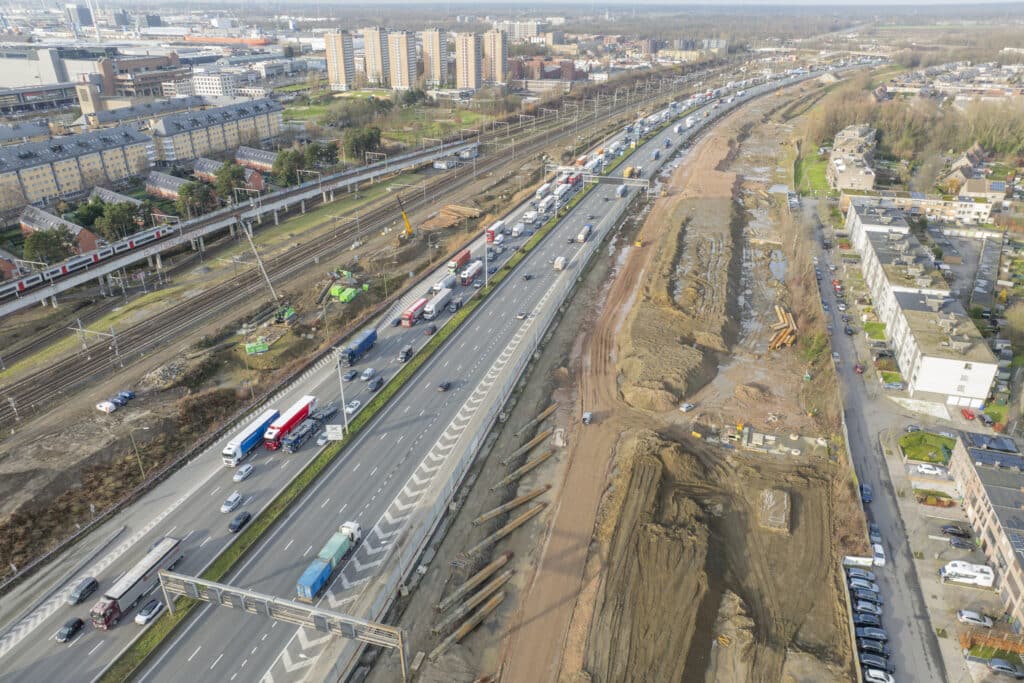
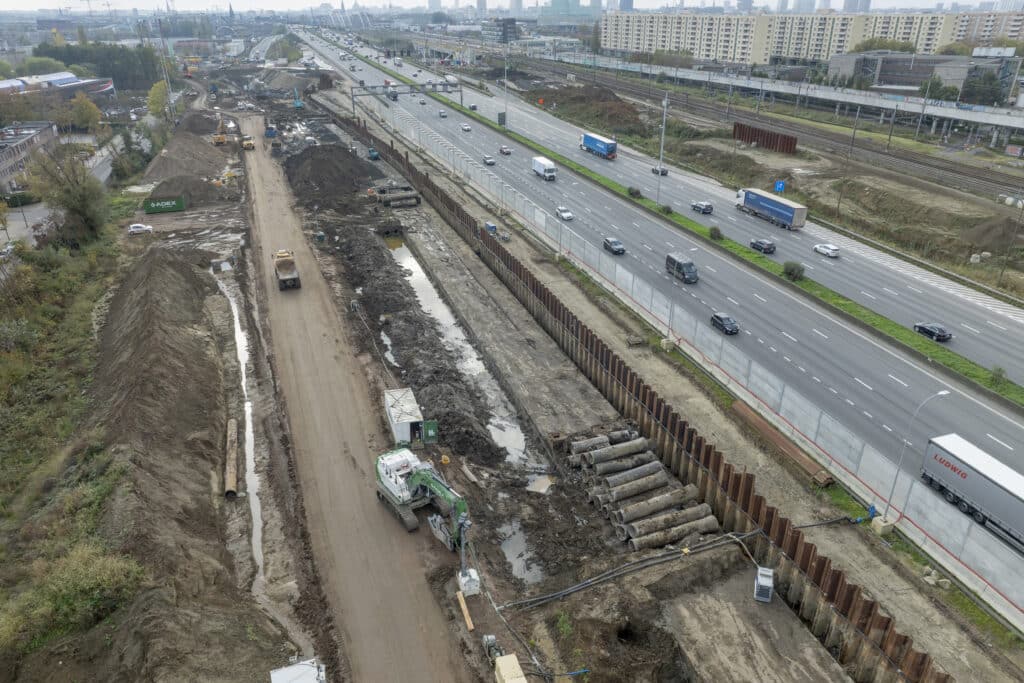
From river to flood buffer
Right next to the E19 in Merksem runs the Schijnkoker, a remnant of the formerly constricted river Schijn. After severe flooding in the 1990s, the river was given a cut at the level of the Albert Canal. The tubes remained in the ground and have served as a buffer ever since. Couldn't the ordinary sewers swallow the rainwater? Then they overflowed into the Schijnkoker, protecting the neighborhood from flooding.
Now excess water drains away through the new, double Schijnkoker. The shafts each measure as much as four meters by two. Through a pumping station on the Albert Canal, this rainwater is then pumped into the canal.
Hello Bypass, bye bye viaduct
With all obstacles removed from the underground, the way is now clear for the construction of the Bypass. Thanks to this temporary highway along the current R1, traffic will stay on the highway and away from the residential areas of Deurne and Merksem during the Oosterweel works.
From the end of 2025, traffic heading to the Netherlands will already travel on the Bypass from the Sportpaleis, allowing us to demolish the first part of the old viaduct. Another step closer to the ultimate goal: a more mobile and livable city and the elimination of the concrete barrier that the viaduct forms today.
